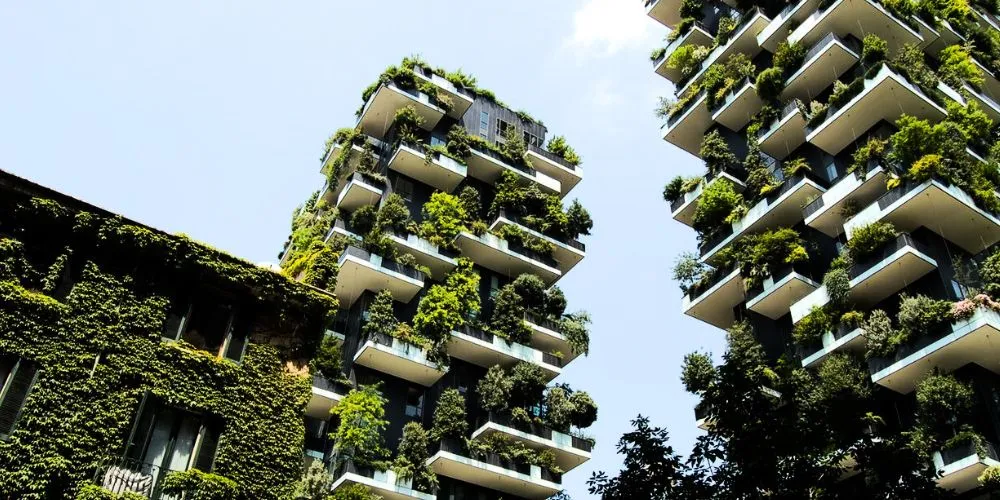Green building materials have emerged as a cornerstone in the construction industry’s commitment to sustainable and environmentally friendly practices. This article offers an in-depth analysis of the current state of the green building materials market, examining key trends, market dynamics, and challenges, and providing insights into the future outlook.
Market Overview
The green building materials market has gained significant traction as the construction industry prioritizes sustainable and energy-efficient solutions. They are designed to minimize environmental impact, reduce resource consumption, and enhance the overall performance and efficiency of buildings. This market encompasses a wide range of materials, including recycled, reclaimed, and energy-efficient products.
Sustainable construction practices, energy efficiency requirements, and increased awareness of environmental issues are driving the adoption of green building materials. These materials contribute to lower carbon footprints and promote healthier living environments.
The approximate decision of the Techgolly market research team is that the global green building materials market size was valued at least USD 400 billion in 2023 and is projected to reach up to USD 884 billion by 2030. The growth is expected to continue at a compound annual growth rate (CAGR) of 10% to 12% from 2023 to 2030.
Key Market Trends
The green building materials market is witnessing several significant trends:
Energy-Efficient Insulation
The demand for energy-efficient insulation materials is increasing. Innovations in insulation technologies, such as recycled cellulose, aerogels, and reflective insulation, improve thermal performance, reducing energy consumption for building heating and cooling.
Recycled and Reclaimed Materials
Recycled and reclaimed materials are gaining popularity in the construction industry. From recycled steel and reclaimed wood to recycled glass and plastic, these materials help reduce waste, conserve natural resources, and promote a circular economy.
Low-Impact Concrete Alternatives
Traditional concrete production is understood for its high carbon footprint. The market is shifting towards low-impact alternatives, including fly ash concrete, geopolymer concrete, and hemp concrete. These alternatives offer reduced environmental impact while maintaining structural integrity.
Smart and Sustainable Technologies
The integration of smart and sustainable technologies is becoming increasingly prevalent in green building materials. From smart windows that adjust based on sunlight to self-healing materials that reduce maintenance needs, technology-driven solutions are enhancing the sustainability of construction projects.
Challenges
Despite the positive trends, the green building materials market faces certain challenges:
Cost Considerations
The upfront cost of some green building materials can be higher than that of traditional alternatives, posing a challenge to their widespread adoption. However, the long-term opportunities, including energy savings and durability, often justify the initial investment.
Standardization and Certification
The absence of standardized definitions and certifications for green building materials can lead to confusion in the market. Establishing clear criteria and industry standards ensures transparency and credibility in the selection of sustainable materials.
Limited Availability
Some green building materials may have limited availability, depending on geographical location and market demand. Ensuring a consistent supply chain for these materials is crucial for the widespread adoption of these materials in construction projects.
Future Outlook
The green building materials market holds several key developments for the future:
Advancements in Bio-based Materials
Bio-based materials derived from renewable sources, such as bamboo, hemp, and mycelium, are expected to see significant advancements. These materials offer sustainable alternatives to traditional construction materials, potentially revolutionizing the industry.
Circular Economy Practices
Adopting circular economy practices will become more prevalent in the green building materials market. Recycling and repurposing construction materials, as well as designing for disassembly and reusability, will contribute to a more sustainable and resource-efficient construction sector.
Net-zero and Positive-energy Buildings
The focus on achieving net-zero and positive-energy buildings will drive the demand for high-performance green building materials. Materials that enhance energy efficiency, promote the integration of renewable energy, and contribute to sustainability will be vital in achieving these ambitious goals.
Conclusion
The green building materials market stands at the forefront of sustainable and environmentally conscious construction practices. As the construction industry prioritizes green building initiatives, the market for these materials is expected to grow. Overcoming cost, standardization, and availability challenges will be essential for the widespread adoption of green building materials. The future outlook is promising, with ongoing innovations and a collective commitment to creating buildings that meet today’s needs and contribute to a more sustainable and resilient future.




